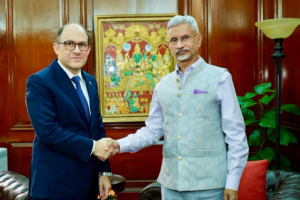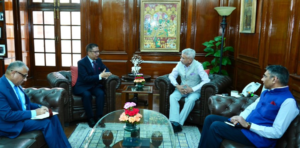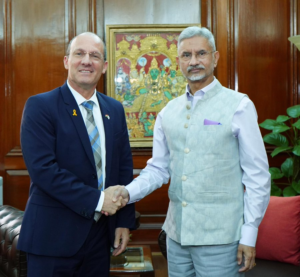PM Modi highlights Maritime Heritage Complex in Lothal as “effort to boost tourism economy”
New Delhi [India], October 15 (ANI): Prime Minister Narendra Modi highlighted the Union Cabinet decision approving the creation of a ‘National Maritime Heritage Complex’ in Gujarat’s Lothal and dubbed it as an effort to boost the tourism economy of the country.
In a post on X, PM Modi shared the link of his LinkedIn post emphasising the Cabinet’s “very interesting decision” and said that such a concept will create new opportunities in the world of culture and tourism.
“Recently, the Union Cabinet took a very interesting decision – of developing a National Maritime Heritage Complex in Lothal. Such a concept will create new opportunities in the world of culture and tourism. India invites more participation in the culture and tourism sectors,” he said.
In his post titled “Let’s focus on tourism” shared on LinkedIn, PM Modi said that the complex will bring ancient Lothal back to life as a mini-replica of the dock city and added such an effort will boost the tourism economy.
He also highlighted the importance of Lothal, noting that excavations have revealed its role as a vital maritime hub and that the ancient docks demonstrate engineering and urban planning that impress modern observers.
“I am very happy to write about a remarkable development that has recently unfolded. Last week, the Union Cabinet approved the creation of a National Maritime Heritage Complex in Lothal. Situated near Ahmedabad, Lothal, the world’s oldest dockyard, was once a vibrant melting pot of civilisations, ideas, and, of course, goods. Excavations have pointed to Lothal’s role as an important maritime centre. The docks, built thousands of years ago, highlight the spirit of ingenuity our ancestors possessed. Its advanced engineering and urban planning leave modern observers in awe, offering a window into the brilliance of our past,” he said in the LinkedIn post.
The Prime Minister also expressed his regret over many historical sites that had faced neglect, causing aspects of the nation’s history to fade following India’s independence. However, he mentioned that this trend had shifted in the last 10 years and the government had started initiatives like this in enhancing the understanding of India’s civilisational history.
“Regrettably, in the decades following independence, we allowed many aspects of our history–and many of our historical sites–to fall into neglect, with our rich past fading from memory. However, the last ten years have seen a change in this trend. Thus, in that spirit, our government has decided to build a vibrant National Maritime Heritage Complex, which will improve our understanding of civilisational history,” he said.
“Such an effort will boost the tourism economy, which I foresee as a major driver of growth in India. When tourism rises, incomes across the board rise. I urge you all, leading and respected professionals, to explore new opportunities in the tourism sector and also share your ideas with me on the same. This way, we will contribute to a stronger economy and at the same time, preserve our rich past for the coming generations,” he added.
Earlier this month, the Union Cabinet approved the development of the National Maritime Heritage Complex (NMHC) in Gujarat’s Lothal. Union Minister Ashwini Vaishnaw stated that the museum at Lothal will be the largest maritime heritage complex in the world.
The maritime project at Lothal will be completed in two phases. The Union Cabinet has granted in-principle approval for Phases 1B and 2, based on the master plan.
The construction of the Lighthouse Museum under Phase 1B will be funded by the Directorate General of Lighthouses and Lightships (DGLL), which will cost Rs 266.11 crore.
Phase 1A of the project is currently underway, with over 60 per cent of the physical work completed. It is expected to be finished by 2025. Phases 1A and 1B will be developed in EPC mode, while Phase 2 will be developed through land subleasing or a public-private partnership (PPP) to establish NMHC as a world-class heritage museum.
The development of the NMHC project is expected to create around 22,000 jobs, with 15,000 direct and 7,000 indirect employment opportunities.






